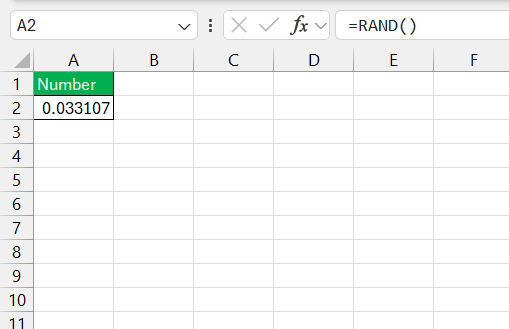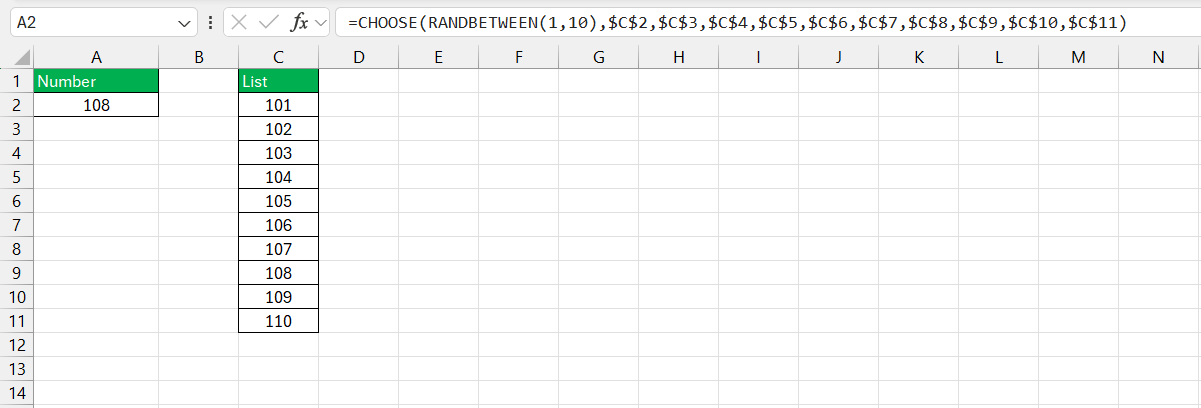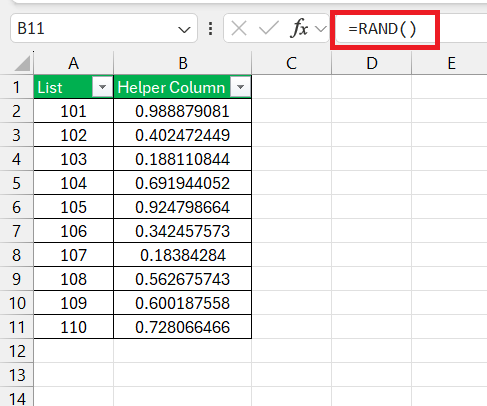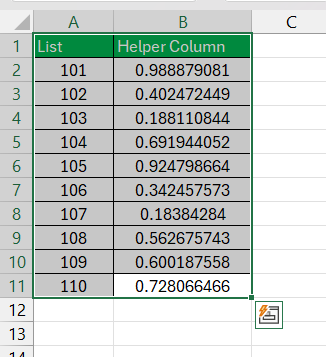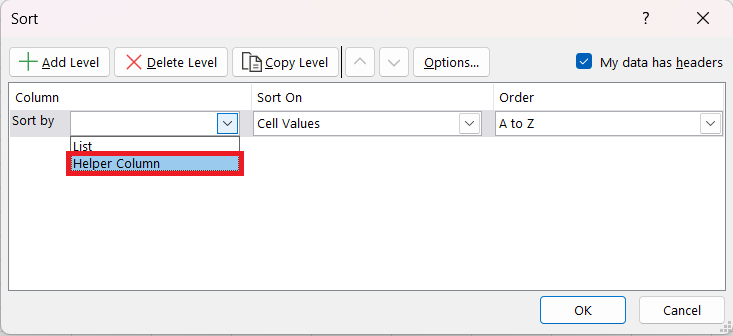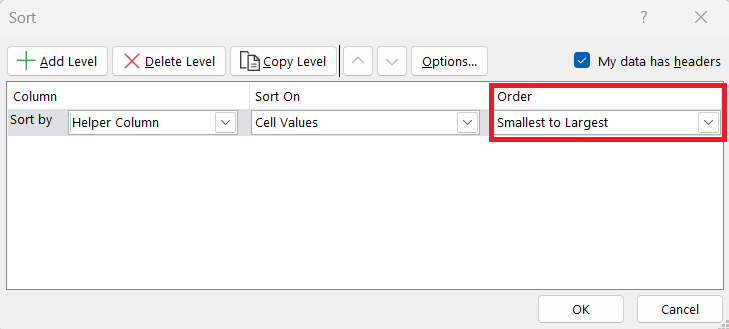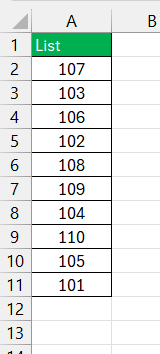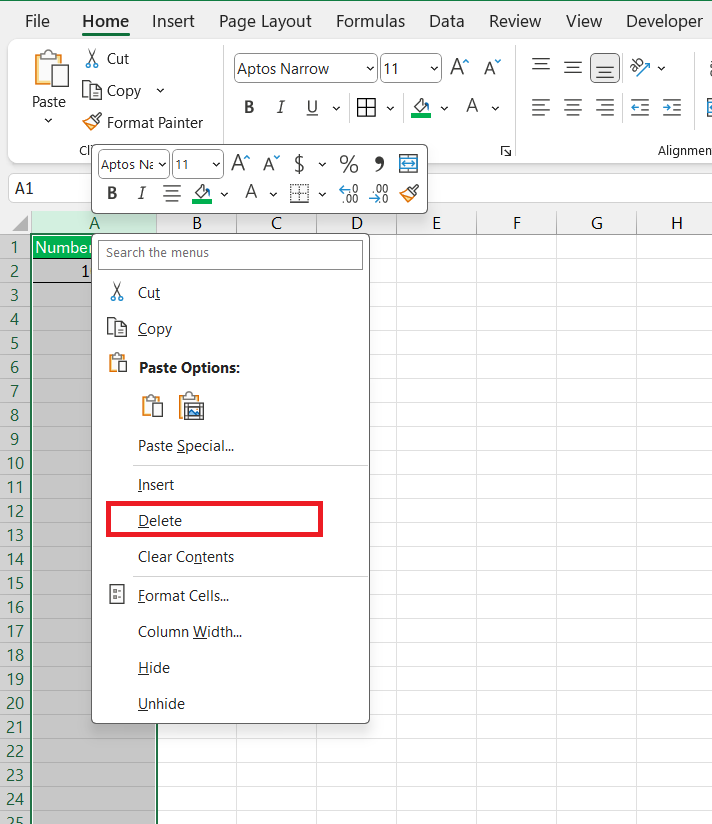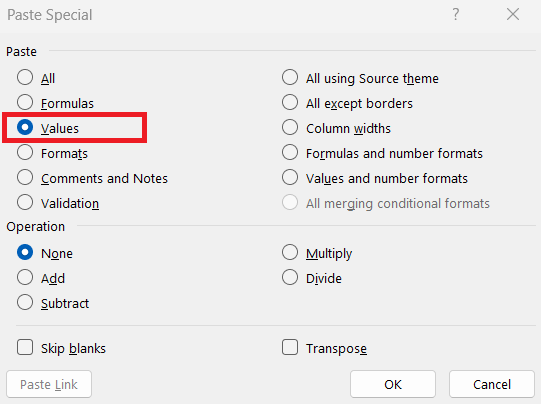Randomizing a list in Excel can be useful for various tasks, such as selecting winners for a giveaway, shuffling team members, or creating randomized datasets. Excel offers several methods to randomize a list, including using built-in functions like RAND, RANDBETWEEN, or leveraging advanced features like Excel’s Sort & Filter tools. This article will walk you through different approaches to how to randomize lists in Excel.
Key Takeaways:
- Excel offers multiple methods to randomize a list, such as using
RAND,RANDBETWEEN, or the Sort & Filter tools. - Randomizing lists ensures fairness and impartiality, making it ideal for tasks like giveaways or task assignments.
- The
RANDfunction generates random numbers between 0 and 1, which can be used to shuffle lists effectively. - The
RANDBETWEENfunction allows for random number generation within a specified range, offering more control. - After randomizing a list, it’s important to clean up by removing or hiding helper columns to maintain a tidy worksheet.
Table of Contents
Introduction to Excel List Randomization
The Benefits of Randomizing Data
In my experience, randomizing data in Excel provides a plethora of advantages for any analyst. This is particularly true when I’m dealing with large datasets and I strive for fairness and impartiality, whether it’s for statistical sampling, conducting a draw, or assigning tasks.
Randomizing helps avoid any biases that might skew the results. By shuffling the data, I guarantee each data point has an equal opportunity to be selected or assigned, thereby enhancing the credibility and reliability of the overall results.
Excel Tools for List Manipulation
Excel boasts a rich set of tools that facilitate extensive list manipulation, enabling me to shuffle, sort, and organize data with ease. For instance, I regularly use the ‘Sort & Filter’ feature for basic ordering tasks.
However, when it comes to randomization, I turn to functions like RAND and RANDBETWEEN, which generate random numbers efficiently. Furthermore, the ‘Data Analysis’ toolpack offers additional functionality like ‘Random Number Generation’ which can be an immense help when dealing with more complex list manipulations.
These tools, when mastered, make Excel a powerful ally for any data-driven task I might encounter.
Step-by-Step to Get Randomize Lists
Starting with the RAND Function
I always remind colleagues that the RAND function in Excel is an excellent starting point for randomization tasks. It’s ingeniously straightforward, creating a random number between 0 and 1 every time the cell containing it recalculates.
To employ this for list shuffling, I simply add a new column named ‘Randomizer’ beside the target list and input =RAND() in the first cell under this title, then press Enter.
This cell now holds a unique random value. By filling the entire column with the RAND function, adjacent to each list item, I’m setting the stage for a perfectly unbiased shuffle once the entire list is sorted by these random numbers.
Advancing to RANDBETWEEN and CHOOSE Formulas
As I delve deeper into Excel’s capabilities, combining the RANDBETWEEN and CHOOSE functions elevates my ability to randomize lists with precision. I typically use RANDBETWEEN when I need to generate random numbers within a specified range, lending itself well to scenarios like assigning a set of tasks or picking a random sample from a numbered list.
The syntax =RANDBETWEEN(low, high) gives me control over the range of numbers that can pop up.
Then there’s the CHOOSE function, which becomes incredibly useful when I have a list of items and want to randomly pick one. By combining these two, for example, with a formula like =CHOOSE(RANDBETWEEN(1,10), $C$2, $C$3, …), I can fetch a random selection from a range of cells.
It’s particularly handy for lists that aren’t sequentially numbered or for custom random selections. However, it’s worth noting that this might lead to the occasional duplicate, which is something to keep in mind depending on the task at hand.
Using the Sort & Filter Feature
If you don’t want to rely on formulas, Excel’s built-in Sort & Filter feature offers a simple and quick way to randomize a list.
STEP 1: Add a Helper Column by using the RAND() function.
STEP 2: Highlight the entire range that contains the list you want to randomize.
STEP 3: Go to the Data tab, and click Sort.
STEP 4: In the Sort dialog box, select ‘Helper Column’ in the ‘Sort by’ dropdown.
STEP 5: Select ‘Smallest to Largest’ as ‘Order’.
STEP 6: Press Ctrl and – sign to delete the helper column.
Your randomized list is ready!
Aftermath of Randomizing Your List
Cleaning Up: Removing Extra Columns
Post-randomization, my Excel worksheet often houses additional columns used for sorting purposes. To maintain a clean and efficient workbook, it’s vital to remove these extra columns. I simply select the columns that contain the random numbers and right-click to choose ‘Delete’ from the context menu.
This step is not just about tidiness, but also about preventing any confusion that might arise from leftover data for anyone who refers to the worksheet after I’m done.
Sometimes, if I intend to retain the option for further randomization or need a record of the random numbers used, I’d just hide the columns instead of outright deletion. This way, they remain accessible but out of sight, maintaining both functionality and clarity.
Preserving Original Data Post-Shuffling
After shuffling, it’s critical to preserve the original data alignment for reference or rollback purposes. For this, I rely on a simple yet effective technique. Prior to randomization, I duplicate the list by copying it to another sheet or location within the same sheet. This safeguard ensures that the original data sequence remains accessible.
Additionally, I’ve found the ‘Paste Special’ option to be of great use, particularly when I need to maintain the randomized sort order for future use. I copy the sorted range and use ‘Paste Special’ to paste just the values, not the formulas which would re-randomize upon recalculation.
This guarantees that my shuffled list order stays intact while the raw data remains unchanged—a prudent step to keep data integrity in check.
FAQ Section
What Is the Purpose of Randomizing Lists in Excel?
The purpose of randomizing lists in Excel is to ensure every entry has an equal chance of being selected. This is crucial for tasks like unbiased sampling, fair task distribution, drawing lots, or when simulating randomness for analyses and games. Randomization helps to eliminate bias and facilitates impartial decision-making processes.
Can Randomizing in Excel Produce Repeat Values?
Yes, randomizing in Excel can produce repeat values, especially when using functions like RAND or RANDBETWEEN that generate numbers independently for each cell. However, Excel offers ways to address this and create non-repeating random lists through unique formulas or by removing duplicates post-randomization.
Is there a way to randomize a list in Excel?
Absolutely, there are several ways to randomize a list in Excel. You can use functions like RAND or RANDBETWEEN alongside the sort feature to shuffle your data, or you can use VBA for a more customized approach, especially if you need to randomize without creating duplicates.
How to shuffle data in Excel?
To shuffle data in Excel, insert a new column next to your data and use the RAND() function to generate random numbers. Then sort your data by this new column, which rearranges the rows in a random order. Afterward, you can delete or hide the random number column if it’s no longer needed.
Is there a randomize function in Excel?
While Excel doesn’t have a one-click ‘randomize’ function per se, it provides the RAND and RANDBETWEEN functions which can be combined with sorting to effectively randomize lists. The Ultimate Suite for Excel add-in offers a dedicated ‘Random Generator’ function for more direct randomization capabilities.
John Michaloudis is a former accountant and finance analyst at General Electric, a Microsoft MVP since 2020, an Amazon #1 bestselling author of 4 Microsoft Excel books and teacher of Microsoft Excel & Office over at his flagship MyExcelOnline Academy Online Course.

